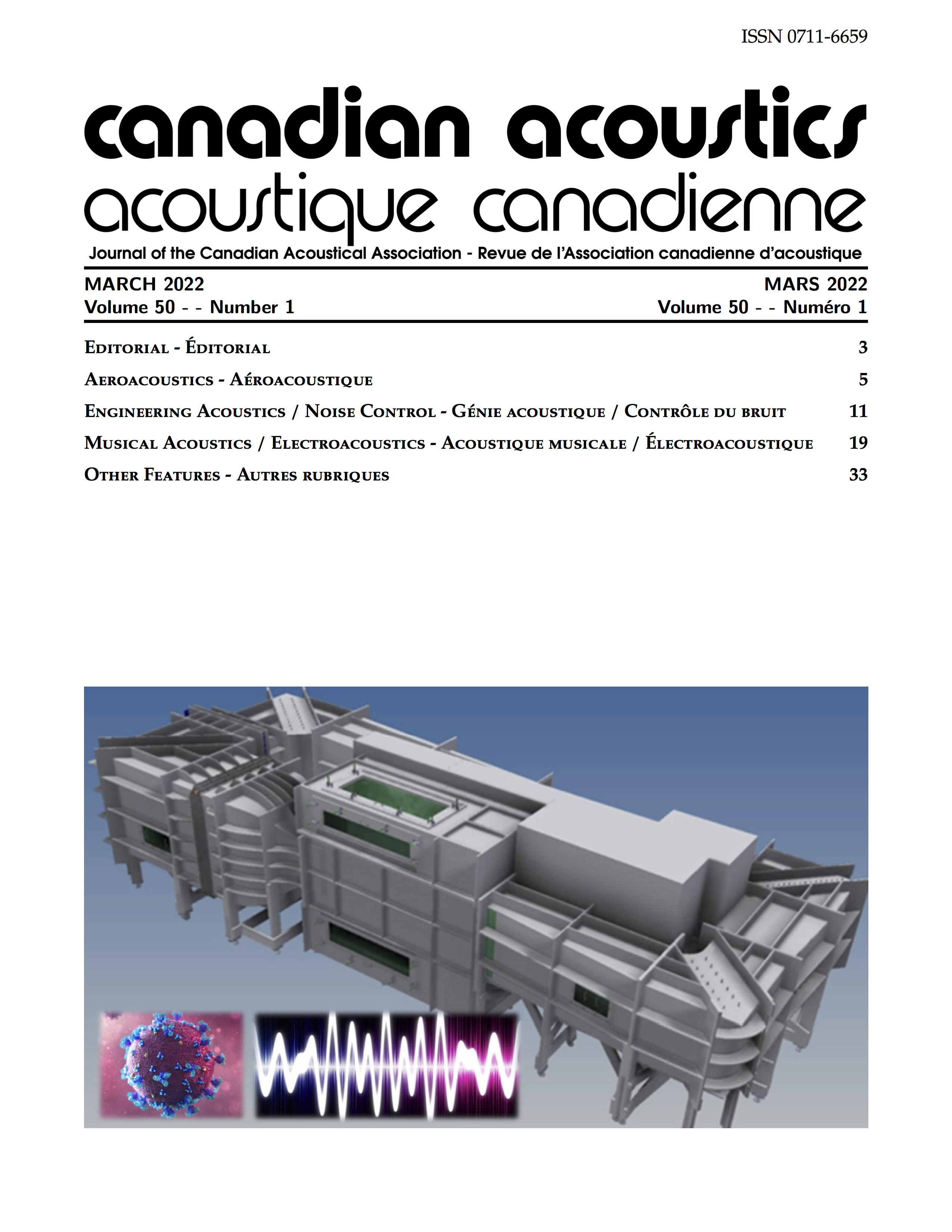Characterization of sound properties of talking drums made from Gmelina arborea wood
Keywords:
music, wood culture, wood product, sound propertiesAbstract
Talking drum is useful for musical purpose. However, it produces a complex sound timbre, difficult to characterize. Although the wooden hourglass-shell geometry making the talking drum was identified as a factor influencing the sound timbre make-up, there is still a need to investigate other suspected factors. This study characterized sound properties of talking drums from Leather covers, force and position of play, tension on the rope, and excited surface impact. Three bolts from the base of Gmelina arborea trees were used to produce the talking drums, hence, sound properties were measured. Values obtained were subjected to descriptive statistics, graphs, and ANOVA (α0.005). Fundamental Frequency, Amplitude, and Sound Damping Time (SDT) at no tension on the rope were significantly lowest (90.06±27.16, 41.03±4.31, 380.83±103.58) for the light force of play and highest (97.00±29.68, 60.26±3.59, 474.44±59.48) for heavy force, respectively. At maximum tension on the rope, SDT of goat skin was significantly higher (478.50±77.04) than cow womb leather cover (438.89±97.65), while Amplitude and SDT were significantly higher (66.61±2.95, 508.52±51.60) for heavy force than light force of play (46.16±7.06, 408.87±92.46), respectively. Tension on the rope was the most essential factor needed in characterizing the quality sound property of the talking drums.
Additional Files
Published
How to Cite
Issue
Section
License
Author Licensing Addendum
This Licensing Addendum ("Addendum") is entered into between the undersigned Author(s) and Canadian Acoustics journal published by the Canadian Acoustical Association (hereinafter referred to as the "Publisher"). The Author(s) and the Publisher agree as follows:
-
Retained Rights: The Author(s) retain(s) the following rights:
- The right to reproduce, distribute, and publicly display the Work on the Author's personal website or the website of the Author's institution.
- The right to use the Work in the Author's teaching activities and presentations.
- The right to include the Work in a compilation for the Author's personal use, not for sale.
-
Grant of License: The Author(s) grant(s) to the Publisher a worldwide exclusive license to publish, reproduce, distribute, and display the Work in Canadian Acoustics and any other formats and media deemed appropriate by the Publisher.
-
Attribution: The Publisher agrees to include proper attribution to the Author(s) in all publications and reproductions of the Work.
-
No Conflict: This Addendum is intended to be in harmony with, and not in conflict with, the terms and conditions of the original agreement entered into between the Author(s) and the Publisher.
-
Copyright Clause: Copyright on articles is held by the Author(s). The corresponding Author has the right to grant on behalf of all Authors and does grant on behalf of all Authors, a worldwide exclusive license to the Publisher and its licensees in perpetuity, in all forms, formats, and media (whether known now or created in the future), including but not limited to the rights to publish, reproduce, distribute, display, store, translate, create adaptations, reprints, include within collections, and create summaries, extracts, and/or abstracts of the Contribution.


